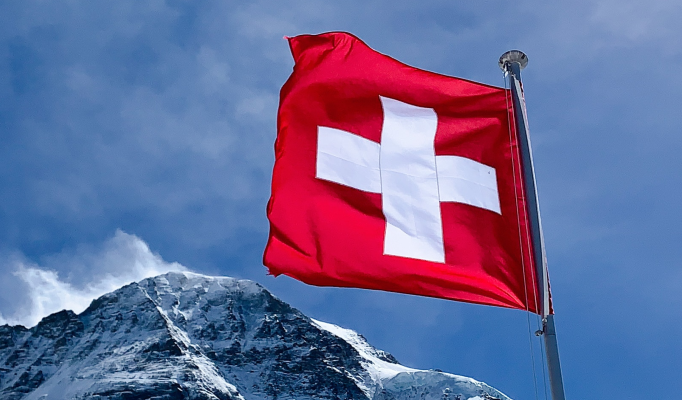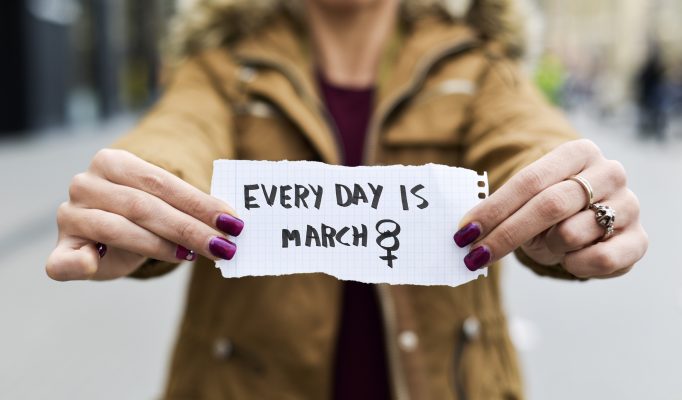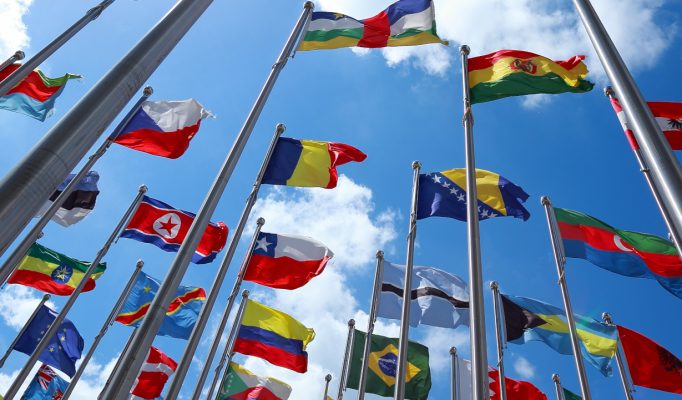All you need to know about Business after Brexit: What’s happening next? How does it affect you? What should you do now – and why?
As of January 1st, 2021 the EU-UK relationship has completely changed. For anyone who is doing business with the UK it is important to understand what has happened and what this specifically means for your company.
Since most Dutch people have become a bit tired of Brexit, we have neatly listed the history below for the curious reader.
If you are not really interested in this – and you may – you can scroll down to “New relationship UK-EU – it is completely different!” to immediately read (i) what has changed as of January 1, 2021, (ii) why this is important to you and (iii) why and how you should act now.
The EU-UK-divorce – are they really completely separated?
You are interested in the background! Thank you for reading this article. This is a good choice because afterwards you will also have a clear picture of the background of the EU and you will have a better understanding of how we got to where we are today.
– Referendum
The United Kingdom (UK) held a referendum on June 23, 2016 in which British citizens could decide on the UK’s departure from the European Union (EU). A majority of British citizens voted in favor of it.
Every European still remembers it – the surprise and disbelief that British citizens actually voted for Brexit!
On October 2, 2016, the then British Prime Minister Theresa May announced at the party conference that the UK will start the negotiation process for the formal withdrawal by the end of March 2017, after which on March 29, 2017 the UK formally notified the European Council of its intention to leave the EU. In accordance with Article 50 of the Treaty on EU, the departure of the UK from the EU will take place 2 years after invocation of this article, i.e. on Friday March 29, 2019 at midnight.
On June 19, 2017, negotiations between the EU and the UK started on three aspects of the Brexit process:
1) What happens to EU citizens living in the UK (and UK citizens living in the EU)?
2) What happens to the Northern Ireland border?
3) How much does the UK owe to the EU?
These three aspects are part of phase 1 of the negotiations. This phase 1 is also called the divorce settlement.
The 27 remaining EU-members (EU-27) are very clear about one thing:
First the UK-EU-divorce has to be settled. Only after that, the EU is willing to negotiate trade deals with the UK.
– The divorce
On December 8, 2017, after 6 rounds of negotiations, the UK and the EU finally reached an agreement on these three key points.
The exact details have yet to be negotiated, but the broad outlines are in agreement.
At the Euro Summit on December 14/15, 2017, the majority of the EU-27 agreed to start negotiations on trade agreements with the UK. This initiated phase 2.
But that does not settle the matter!
Why does the EU need trade agreements with the UK at all?
To make this clear, a brief history of the EU follows.
How did the EU start in the first place?
The foundation to the EU was laid after World War II which saw a human and economic catastrophe that hit Europe hardest. Based on the desire to ensure it could never happen again, statements such as Winston Churchill’s of 1946 call for a “United States of Europe” lead to the establishment of the Council of Europe in 1949 as the first European organization. The French Foreign Minister Schuman proposed a community to integrate the coal and steel industries of Europe. On the basis of that speech, France, Italy, Belgium, Netherlands and Luxembourg together with West Germany (the UK was no member at that time!) signed the Treaty of Paris (in 1951) creating the European Coals and Steel Community. This was the beginning of the first institutions, such as the High Authority (now the European Commission) and the Common Assembly (now the European Parliament).
The Intergovernmental Conference of the Common Market and Euratom focused on economic unity, leading to the Treaties of Rome (being signed in 1957) which established the European Economic Community (EEC) and the European Atomic Energy Community (Euratom) among the members (the UK still not being a member at that time).
After much negotiation Denmark, Ireland and the United Kingdom (with Gibraltar) eventually joined the European Communities on January 1, 1973. This was the first of several enlargements of the Union.
On February 7, 1992 the Maastricht Treaty was signed which established the European Union; the EU came into force on November 1, 1993.
In 1995 the Schengen Agreement came into force between seven members, expanding to include nearly all others by the end of 1996 (again – without the UK). In 1999 the euro as a currency was launched and the European Central Bank was established. On January 1, 2002, notes and coins were put into circulation, replacing the old currencies entirely.
How come the UK never had the Euro as its currency?
The United Kingdom entered the European Exchange Rate Mechanism in October 1990. The UK spent over £6 billion trying to keep its currency within the narrow limits prescribed by ERM, but was forced to exit the program within two years after the pound sterling came under major pressure from currency speculators followed by the ensuing crash of September 16, 1992 (“Black Wednesday”). During the negotiations of the Maastricht Treaty of 1992 the UK secured an opt-out from adopting the euro.
The EU Single Market – What is it and what makes it so valuable?
On January 1, 1993 the European Single Market was established. The Single Market refers to the EU as one territory without any internal borders or other regulatory obstacles to the free movement of people, goods and services.
The European Single Market, which was completed in 1992, allows the free movement of goods, services, money and people within the European Union, as if it was a single country. It is possible to set up a business or take a job anywhere within it.
A functioning Single Market stimulates competition and trade, improves efficiency, raises quality, and helps cut prices. The European Single Market is one of the EU’s greatest achievements. It has fueled economic growth and made the everyday life of European businesses and consumers easier.
The UK has left the Single Market – what has happened on January 1, 2020 and what does this mean for you (and for the rest of the EU)?
– Negotiations
Back to the Brexit story: After an agreement on the three key points of the negotiations was reached on December 15, 2017, gradual progress was made during the second phase of the negotiations.
For example, on March 19, 2018, a partial agreement was reached between the EU and the UK on the text of the Withdrawal Agreement and on March 23, 2019, the European Council adopted the guidelines for the relationship with the UK post-Brexit. The EU also underlined its desire to maintain the closest possible partnership with the UK after the withdrawal.
Despite intensive negotiations, certain issues that are essential for the EU such as the fallback option to avoid a hard border on the island of Ireland – the so-called “backstop” – remain difficult.
On March 20, 2019, the British Prime Minister asked to extend the 2-year period of Article 50 until June 30, 2019. The EU-27 did not agree and offered a postponement until May 22, 2019 on the condition that the British parliament approves the Withdrawal Agreement before March 29, 2019. If approval is not forthcoming, Brexit will have to be postponed until April 12, 2019 in connection with the upcoming elections for the European Parliament, which will take place on May 23, 2019. After all, if approval is not forthcoming and Brexit has not yet taken place, the UK must elect the representatives to the European Parliament.
Due to the lack of parliamentary approval, the British Prime Minister again asked for a postponement on April 5, 2019, this time until June 30, 2019.
The EU-27 agreed to a further postponement at an extraordinary summit on April 10, 2019, this time until October 31, 2019.
Despite the negotiators reaching an agreement on the revised Withdrawal Agreement on October 17, 2019 and the EU-27 approving it on the same day, the British Prime Minister again asks for a postponement on October 19, 2019 with which the European Council agrees. The Brexit deadline had been extended to January 31, 2020.
After ratification of the Withdrawal Agreement by the UK and the EU, the UK left the EU on January 31, 2020 and is no longer part of the European Single Market. A transition period has been agreed in order to give travelers and entrepreneurs from both the EU and the UK the opportunity to prepare for the end of the free movement of persons and goods between the EU and the UK.
Transition period lasted until and including December 31, 2020
During the transition period, nothing has actually changed for entrepreneurs because the UK had to comply with all EU rules and laws until December 31, 2020 in preparation for new agreements that will apply from January 1, 2021.
This transition period could have been postponed for up to 2 years if the UK had requested an extension before July 1, 2020. However, the UK had not made use of this option, so that the EU rules and laws will no longer apply to the UK as of January 1, 2021.
On 24 December 2020 the EU and UK ultimately reached a Trade and Cooperation Agreement in order to temporarily secure travelling and doing business as of 1st January 2021.
New relationship UK-EU – it is completely different!
On January 1, 2021, the EU’s relationship with the UK has changed dramatically – that’s for sure.
The Single Market – the European free movement of goods and people – no longer applies to the UK despite the reached EU-UK Trade and Cooperation Agreement (EU-UK Agreement).
Not only are there more checks and administrative actions at the border, it is also mandatory to make import and export declarations; entrepreneurs have to adhere to new regulations for the import and export of products. All this causes a delay in the flow of goods, which will also jeopardize production processes.
What can and what should you do?
Does your company have direct or indirect business (relationships) with the UK? You need to check whether your agreements will still uphold now that Brexit is a fact and the new VAT administration and customs formalities are causing delays and extra costs affecting the production lines on both sides of the Channel. Due to the necessary health certificates for all agricultural shipments from and to the UK etc. the food industry is affected heavily by the Brexit.
31 million jobs in Europe depend on exports. So, even if you do not have a direct relationship with the UK, you could have an indirect UK relationship through one of your business partners and still be adversely affected by the end of the transition period.
The EU-UK Trade Cooperation Agreement
When countries enter a trade agreement, like the EU-UK Agreement, they often agree to award each other’s goods preferential origin status. This means that countries give each other a discount (or even an exemption = zero tariff) on import duties when there is mutual import of goods. This ensures cheaper goods: as lower/no import duty is due, one can sell/buy these specific goods at a lower price and even sell more in that country.
A trade agreement, like the EU-UK Agreement, specifies exactly which requirements must be met when manufacturing a good in the EU/UK to make use of the lower import tax.
Trade in goods:
For the businesses trading in goods the EU-UK Agreement offers some relief as both parties have agreed on zero-tariffs or quotas on all traded goods. This is, however, only applicable if the ‘preferential rules of origin’ are met. These are laid down in the EU-UK Agreement.
Materials of UK origin count as components of preferential origin – and vice versa – therefore making it easier to reach the threshold for zero-tariff / quota-free market access.
Another benefit of this agreement is the mutual recognition of trusted traders programmes (Authorised Economic Operators) which should ensure lighter customs formalities and smoother flow of goods. This is, however, depending on the correctness of the data entered.
Nonetheless checks will apply to all goods traded.
As of January 1st, 2021 goods imported from the UK therefore need to be accompanied by an origin declaration which is drawn up by the exporter. If there is a mistake in the information provided in the declaration form, this first needs to be corrected before the goods can cross the border. From the first few months of 2021 it was obvious that long delays occur as a mistake is quickly made as finding the right HS code is not an easy task as here are 21 divisions with numerous subdivisions each.
Trade in services:
The EU-UK Agreement goes beyond the provisions of the WTO General Agreement on Trade in Services, however the UK will no longer benefit from the freedom to supply services across the EU like it did before Brexit. UK service suppliers will have to comply with host-country rules in each EU-member state and will no longer benefit from the mutual recognition (e.g. of professional qualifications) or passporting rights for financial services. The same applies to EU service suppliers wanting to offer services in the UK.
As transport is an essential part of the EU-UK relations, the EU-UK Agreement ensures continued air, road and maritime connectivity and includes provisions to ensure high levels of transport safety, passenger and workers’ rights and environmental protection.
Thorough preparation is better and much cheaper than repairing afterwards!
We therefore – very kindly but urgently – recommend that you carry out a “Post-Brexit Baseline Measurement” check as soon as possible to know what you still need to adjust in order to safeguard your interests when doing business with the UK.
Act now – Take the free Post-Brexit Baseline Measurement Check!
In order for you to know where to start and what to check in your company we have developed a “Post-Brexit Baseline Measurement” check. It’s a practical Checklist to help you understand where your company is already fully ready for business with the UK after Brexit and where a fix still is needed.
Send an email to info@acginter.com and we will send you a copy of the “Post-Brexit Baseline Measurement Checklist” free of charge.
Please also indicate whether you wish to receive it in Dutch or in English.


